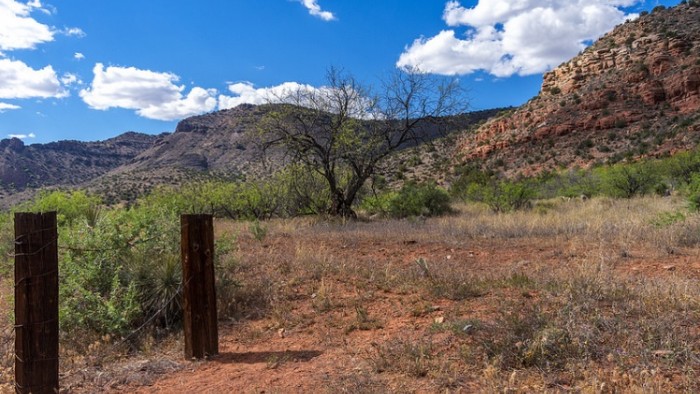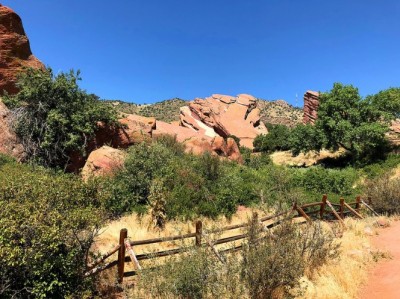New Impact Investing Partnership Fuels Ranch Conservation

One would not typically think a timberland investment manager would partner with a land trust to conserve a ranch as an impact investing deal. However, this is exactly the case for the 25,000-acre BX Ranch in Pueblo County, Colorado. At the 2018 Land Trust Alliance Rally Conference, the “Impact Investing – The ‘Real’ Deal” workshop showed how the Palmer Land Trust developed an innovative impact investing framework with Lyme Timber Company and The Nature Conservancy to secure the funds necessary to protect the ranch.
Overall, this project demonstrates the risks and benefits of undertaking an unconventional partnership to achieve conservation success. Palmer Land Trust provided the local perspective and credibility. Lyme Timber Company provided the outside capital and transaction expertise. The Nature Conservancy leveraged its network of partners and resources to connect the two former players while providing significant startup funding.
Forming an Unlikely Partnership
A land trust partnering with an investment fund manager to achieve conservation success may seem unique. However, these types of public-private partnerships are demonstrating themselves to be effective vehicles to satisfy the goals of both partners.
Given the severe limitations of available funding for conservation efforts, many land trusts may not be able to rely solely on grants and philanthropic donations to achieve their missions.
“The main questions with securing large-scale properties are ‘How do we move forward?’ and ‘What are the right layers of capital, people and expertise that can get this done?’” said Rebecca Jewett, executive director of Palmer Land Trust.
By looking to an investment fund manager to provide the capital necessary to advance a project, land trusts can increase their impact. Jewett said it is important to “build the toolbox” of financing options available for land trusts in structuring land protection deals.
From the impact investor perspective, investment fund managers can satisfy their investors’ desires in two ways. First, they can strategically select projects that are projected to return a profit. Second, they can choose projects that make a conservation difference. The managers benefit from the partnership by tapping into the expertise provided by land trust staff in monetizing the conservation values of projects.
Breaking down the Deal
The BX Ranch deal in southeast Colorado is a prime example of impact investing at work. The Palmer Land Trust, a regional conservation organization working in southeast Colorado, identified the ranch as a priority target but lacked the funds to protect it in the necessary timeline.
Within its 25,000 acres, the ranch contained a significant amount of ecologically rare grassland habitat. It was also one of the last remaining large-scale properties in the region that could support a working cattle operation, according to Jewett. Additionally, it was a priority for the land trust due to its size and intactness. Its proximity to the increasingly urban I-25 corridor and the resulting threat of development were also important.
The Nature Conservancy assisted Palmer Land Trust by engaging Lyme Timber Company as a potential investor to move the deal forward. Lyme Timber Company is a private timberland investment manager that “focuses on the acquisition and sustainable management of lands with unique conservation values,” according to its website. Most recently, it has branched into other types of conservation investments beside forests. These include wetland mitigation banks and agricultural industry investments.
Why was the firm interested? Peter Stein, managing director of Lyme Timber Company, said that agricultural lands are another physical asset for which Lyme Timber Company could employ its investment strategy. As it does with its strategy for forest assets, Lyme Timber Company sought out high-conservation-priority farms and ranches on which it could facilitate conservation easement transactions.
On top of that, Stein estimates there is 10 times as much public funding available for agricultural and ranch conservation easements as there are for forestland easements. Overall, before deciding whether to enter into a deal on the BX Ranch project, Lyme Timber Company needed to determine if it would make sense financially.
The proposed plan for the project was phased. Lyme Timber Company would first purchase the ranch. Then it would sell a conservation easement on it to Palmer Land Trust. After that, Lyme Timber Company would undertake healthy management practices on the land to improve its value.
These practices include techniques mimicking historic uses of the land in which cattle would not return to grazed areas for two to three years. Subsequently, it would sell the encumbered ranch once it became sufficiently valuable – preferably to a local buyer in the ranching community. (Encumbered property is property that is burdened by a legal claim – in this case, a conservation easement.)
Palmer Land Trust and The Nature Conservancy were eager to partner with Lyme Timber Company on the project. According to Jewett, “The beauty of outside capital from an entity like Lyme is that we can act really fast. And they actually have the ability often to hold a property longer than a conservation organization would.”
Conservation organizations are not generally able to purchase a property and hold it for a long time, since doing so would tie up critical capital that could be used elsewhere.
According to Jewett, if Lyme Timber Company had decided not to commit to the deal, Palmer Land Trust and The Nature Conservancy would have continued to search for a local buyer, thereby leaving the property in its vulnerable state on the market.
“We would have just kept scanning the landscape, but that uncertainty window would have kept just getting bigger and bigger,” Jewett said.
Lyme Timber Company and The Nature Conservancy conducted a financial analysis to identify the potential revenue streams and evaluate what the easement might be worth. The Nature Conservancy then purchased the option on behalf of Palmer Land Trust and Lyme Timber Company. Doing so allowed Lyme Timber Company to subsequently purchase the ranch once the firm determined it wanted to proceed.
In order to decide to commit, Lyme Timber Company was “looking for a return that would be similar to our forestland investment return,” Stein said.
“We wanted the easement transaction to do exactly what it does for our forestland deals – bring the basis down for our investment,” Stein said, “low enough so the sustained yield activities (in this case, cattle grazing versus timber harvesting) would be sufficient to make an adequate risk-adjusted return.”
Lyme Timber Company determined that was the case, Stein said. It closed on the property in June 2014 and then closed on the easement one year later. Lyme Timber Company covered its transaction costs, while Palmer Land Trust covered its stewardship and endowment costs. This deal was Lyme Timber Company’s first agricultural purchase.
Highlighting the Net Financial and Conservation Gain
Even though the transactions had been completed, the deal was not fully wrapped up. According to Stein, for Lyme Timber Company to fully recoup and exceed its initial investment into the property, and thereby repay its investors, it needed to enhance the quality of the ranch land to increase the eventual sale price of the ranch. This strategy is currently in progress.
Stein said the goal is for the encumbered property to ultimately be sold for a higher price than what Lyme Timber Company purchased it for when it was unencumbered. To advance efforts to improve the quality of the land, The Nature Conservancy implemented a three-year pilot project on the ranch once the easement was in place to test various grazing-management practices. It lined up the Savory Institute as the grazing lessee, which is using holistic management to mimic historic range management.
One interesting component of these practices is the value they add to the conservation goals of the deal, according to Jewett and Stein. The engagement with the Savory Institute was built into the language of the easement, adding monetary value. Additionally, the easement’s baseline documentation will be reset after the enhancement activities are fully implemented.
This updated baseline documentation will serve as the standard for future activity comparison during easement monitoring. This update will elevate the minimum requirements the landowner must maintain on the land. Stein said he believes it is the first time this type of reset has been incorporated into the development of an easement.
Assessing the Lessons Learned
At the time of the project, the BX Ranch was the biggest deal Palmer Land Trust had ever taken on, Jewett said. She learned from the experience that the land trust should embark on more deals of this type, especially now that its staff have immensely increased their transactional expertise through the deal.
Jewett said that this type of deal is a great way to improve the land while also benefiting the local community. Yet at the same time, this deal model cannot be marketed as a panacea for funding large-scale projects that may otherwise be lacking capital. This is because the enabling conditions for both partners to engage in these types of deals do not often come together.
Note: Lyme Timber Company, The Nature Conservancy, and Land Trust Alliance have all donated to Conservation Finance Network.
To comment on this article, please post in our LinkedIn group, contact us on Twitter, or use our contact form.
